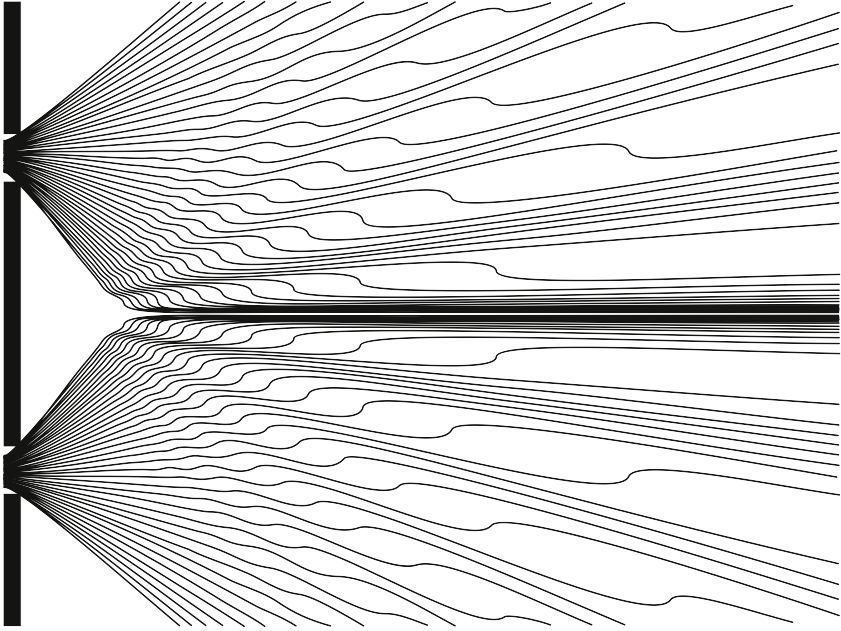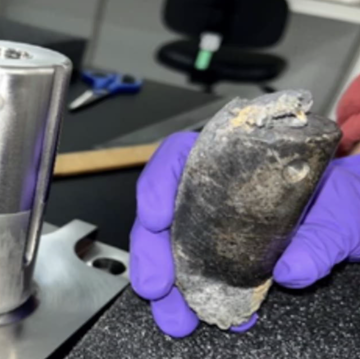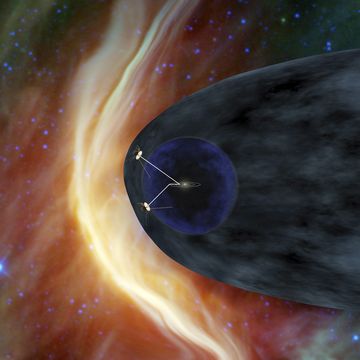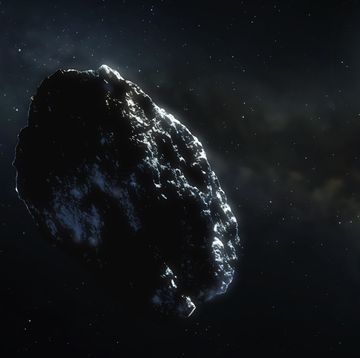Quantum mechanics is baffling. On the atomic and subatomic scale, matter seems to behave in ways that we, in the macro world, would generally think of as impossible. Particles can exist in two different places at once, and particle-like interferences in space are thought to leap in and out of existence.
To put it simply, physicists generally grapple with this odd behavior of particles by accepting that matter can in fact exist with multiple properties at once. They model this mathematically by using wave functions—equations that have multiple values that make them true. These various properties of atomic particles are called quantum states, and the theory of quantum superposition says that particles can exist in multiple quantum states at once. The wave function is a representation of all the possible quantum states of a particle. Until the particle is measured, causing the wave function to "collapse," that matter really does exist with all possible properties.
But there is one theory that does not require you to accept these wacky ideas about matter: The De Broglie–Bohm pilot-wave theory, which is the subject of a great new episode of PBS's Space Time.
Pilot-wave theory argues that particles don't also exist as probabilistic waves, but that there are both real particles—which always have definable properties—and real waves influencing how the particles move.
Take the double-slit experiment for example. When light is shone through two parallel slits, the light waves run into each other on the far side and create a pattern—called an interference pattern—on the surface it hits. But when you shoot a single photon particle through the double slits, it still creates the interference pattern even though there is nothing to interfere with it, leading most physicists to conclude that the particle simultaneously exists as a non-physical wave function.
Pilot-wave theory, alternatively, says that physical waves exist in addition to the particles and create kind-of tracks for the particles to follow. If we could only know all the properties of the particle—its velocity, direction, location, etc.—then we could accurately predict where it is going to ultimately land. This is counter to the general idea of quantum mechanics, which states that the course of the individual particle is fundamentally random, or probabilistic.
But there are some major problems with pilot-wave theory that have prevented it from becoming widely, or even commonly accepted. Louis de Broglie, who first proposed it, quickly scrapped the idea in favor of probabilistic interpretations that say matter does exhibit the properties of a wave and a particle simultaneously. De Broglie even opposed David Bohm when Bohm resurfaced and expanded the theory decades later.
For one, pilot-wave theory requires that "hidden variables" exist to describe the properties of the particles—variables that we cannot, or haven't yet determined that would explain the probabilistic results of quantum experiments according to the rules of classical physics, removing the randomness. This is a controversial idea, although it was famously supported by Einstein, who once declared, "I am convinced God does not play dice."
But despite Einstein's reservations, multiple mathematical theorems have all but proven that hidden variables cannot explain away all of the bizarre behaviors seen in quantum mechanics. The most recent and famous being John Stewart Bell's theorem, which concludes that, "No physical theory of local hidden variables can ever reproduce all of the predictions of quantum mechanics." This does not necessarily mean that pilot-wave theory is incorrect, but it requires that any hidden variables exist across the wave function rather than applying only to the particle.
Perhaps even more damning to pilot-wave theory is the fact that it doesn't account for the theory of relativity. Quantum mechanics is the study of atomic and subatomic particles at normal speeds, while quantum field theory is the study of those same particles at relativistic speeds. Pilot-wave theory has no counterpart to explain particle behavior at near-light-speed, which is part of the reason it cannot explain particles existing in two places at once, or springing in and out of existence, as we seem to have observed.
Pilot-wave theory, as appealing as it is—not requiring matter to exist with multiple properties, and all—is therefore incorrect, or at best, incomplete. But really, our understanding of the quantum realm itself is certainly still incomplete, and it may be that de Broglie was more right than he knew after all.

Jay Bennett is the associate editor of PopularMechanics.com. He has also written for Smithsonian, Popular Science and Outside Magazine.














